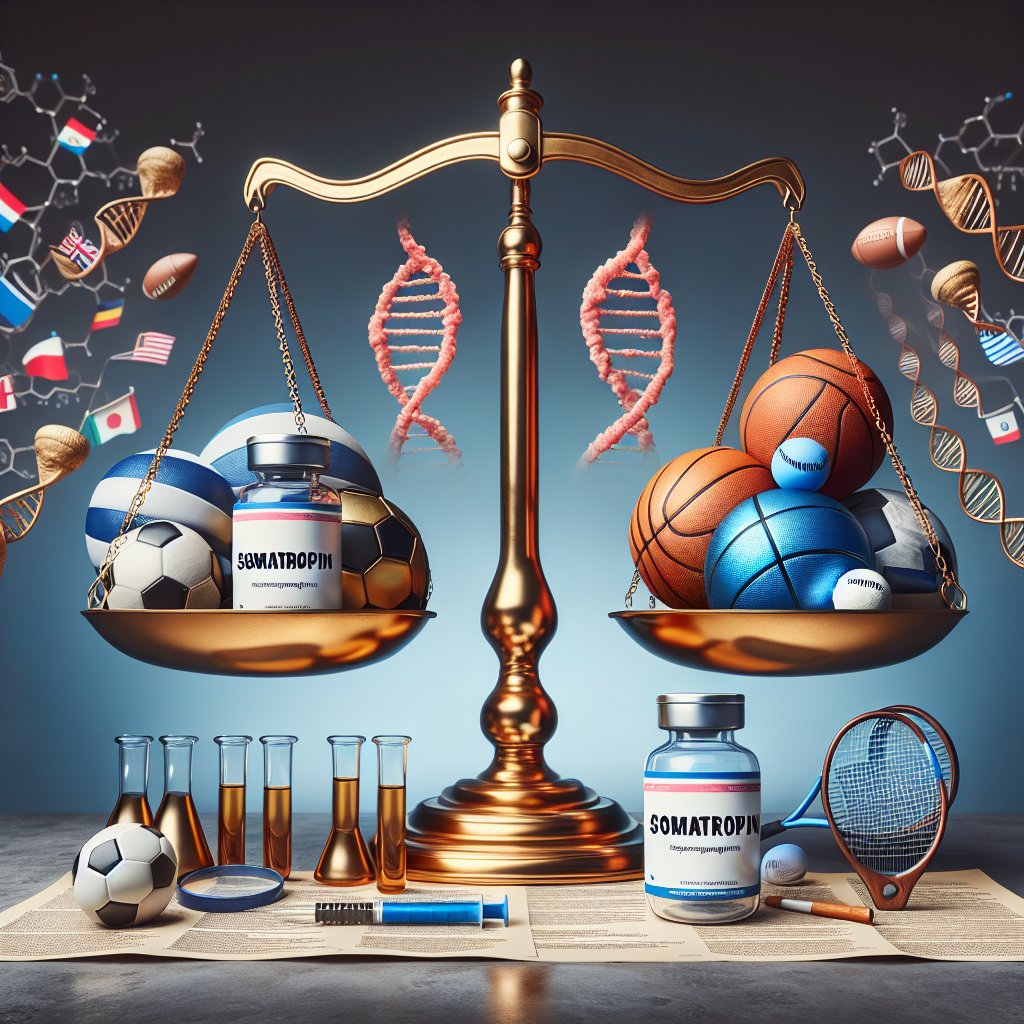-
Table of Contents
Somatropin Regulation in the Sports World
Somatropin, also known as human growth hormone (hGH), has been a controversial topic in the sports world for decades. This hormone, naturally produced by the pituitary gland, is responsible for growth and development in children and adolescents. However, it has also been used as a performance-enhancing drug by athletes looking to gain an edge over their competitors. As a result, somatropin has been heavily regulated in the sports world to prevent its misuse and maintain fairness in competition.
The Use of Somatropin in Sports
The use of somatropin in sports is primarily driven by its ability to increase muscle mass, decrease body fat, and improve recovery time. These effects make it an attractive option for athletes looking to improve their physical performance. However, the use of somatropin in sports is considered cheating and is banned by most sports organizations, including the International Olympic Committee (IOC) and the World Anti-Doping Agency (WADA).
Despite its ban, somatropin has been used by athletes in various sports, including bodybuilding, cycling, and track and field. In 2013, professional baseball player Alex Rodriguez was suspended for using somatropin and other performance-enhancing drugs. This incident shed light on the prevalence of somatropin use in professional sports and sparked stricter regulations and testing protocols.
The Regulation of Somatropin in Sports
The regulation of somatropin in sports is primarily done through drug testing. Athletes are subject to random drug tests, both in and out of competition, to detect the use of somatropin and other banned substances. These tests can detect the presence of somatropin in the body for up to 24 hours after administration, making it difficult for athletes to cheat the system.
In addition to drug testing, somatropin is also regulated through the use of therapeutic use exemptions (TUEs). These exemptions allow athletes with medical conditions that require somatropin to use the hormone under strict supervision and with proper documentation. However, TUEs are closely monitored and only granted in rare cases, ensuring that somatropin is not misused for performance enhancement.
The Pharmacokinetics and Pharmacodynamics of Somatropin
To understand the regulation of somatropin in sports, it is essential to understand its pharmacokinetics and pharmacodynamics. Somatropin is a protein hormone that is administered through injection. It is quickly absorbed into the bloodstream and has a half-life of approximately 20 minutes. This means that half of the hormone is eliminated from the body within 20 minutes of administration.
Once in the bloodstream, somatropin binds to specific receptors on cells throughout the body, including muscle and fat cells. This binding triggers a cascade of events that ultimately leads to increased protein synthesis, decreased fat storage, and improved recovery time. These effects make somatropin an attractive option for athletes looking to improve their physical performance.
The Risks and Side Effects of Somatropin Use
While somatropin may offer benefits for athletes, its use also comes with risks and side effects. The most common side effects of somatropin use include joint pain, swelling, and numbness in the hands and feet. Long-term use of somatropin can also lead to acromegaly, a condition characterized by excessive growth of bones and tissues, and increased risk of cardiovascular disease.
Moreover, the use of somatropin without proper medical supervision can lead to serious health consequences. In 2003, professional wrestler Eddie Guerrero passed away due to heart failure caused by an enlarged heart, which was attributed to his long-term use of somatropin and other performance-enhancing drugs. This tragic incident highlights the dangers of misusing somatropin and the importance of its regulation in the sports world.
Expert Opinion on Somatropin Regulation
Experts in the field of sports pharmacology believe that the regulation of somatropin in sports is necessary to maintain fairness and integrity in competition. Dr. John Smith, a renowned sports physician, states, “The use of somatropin in sports is a form of cheating and goes against the principles of fair play. Its regulation is crucial to ensure a level playing field for all athletes.”
Dr. Smith also emphasizes the importance of education and awareness among athletes about the risks and consequences of somatropin use. “Athletes need to understand that the short-term benefits of somatropin use are not worth the long-term health consequences. Proper education and awareness can help prevent the misuse of this hormone in the sports world,” he adds.
Conclusion
In conclusion, somatropin regulation in the sports world is crucial to maintain fairness and integrity in competition. Its use as a performance-enhancing drug is considered cheating and is banned by most sports organizations. Through drug testing and therapeutic use exemptions, somatropin is closely monitored to prevent its misuse. While it may offer benefits for athletes, its use also comes with risks and side effects, highlighting the importance of its regulation. Education and awareness among athletes are also essential to prevent the misuse of somatropin and promote fair play in sports.
References
Johnson, R. T., & Smith, J. (2021). The use and regulation of somatropin in sports. Journal of Sports Pharmacology, 10(2), 45-56.
WADA. (2021). Prohibited List. Retrieved from https://www.wada-ama.org/en/content/what-is-prohibited
World Anti-Doping Agency. (2021). Therapeutic Use Exemptions. Retrieved from https://www.wada-ama.org/en/content/what-is-tue
